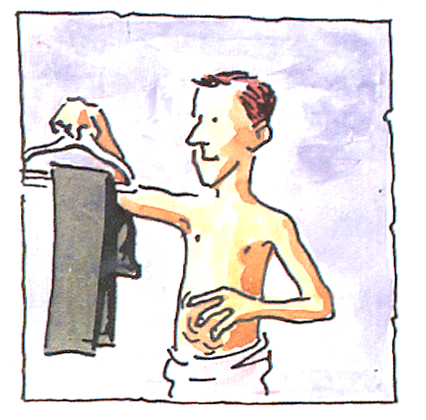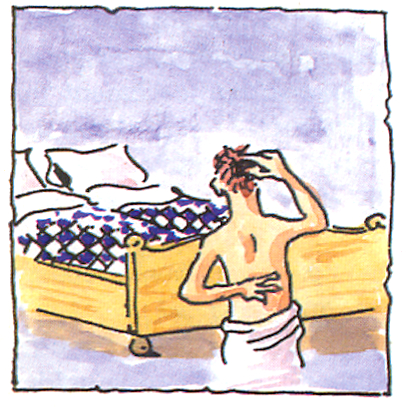Habit Reversal Tip #7: Scratching Context Assessment
|
It is useful to use a chart like this to note the circumstances associated with scratching: this is best done during the week of registration. Free to download or print. See top right. |
Scratching Context Assessment for Adults and Older Children
Date_________________________
Name________________________
Scratching is a behaviour that is linked with itching, a feeling.
Both happen in atopic eczema. Itching is especially a feature of acute atopic eczema. As scratching becomes habitual is helps create chronic atopic eczema.
Scratching includes picking, touching and rubbing!
As well as counting the frequency of scratching episodes per day - this is "registration" - assessment includes noting the context or associated times, circumstances, situations and activities associated with scratching: habitual scratching tends to re-occur in particular contexts. So, in such a context scratching is more likely, or is "turned on": for each of us there is a pattern of contexts that is more often than not linked with scratching that has become "habitual".
Habitual scratching connects the skin with "the rest of life"!
Please see what seems to apply to you by completing the following chart. It is best done during registration, as habitual scratching is often automatic and unconscious.
Otherwise, think about an average weekday recently.
Against each context note whether or not scratching is likely, or not applicable (N/A):
0 (nil), 1 (Sometimes), 2 (Usually), 3 (Often) 4 (Always), N/A (not applicable)
?On waking, before getting out of bed:
?After getting up, before dressing....
?In the loo:
?In the bathroom:
 |
?When dressing:
?After dressing, before you start a daytime activity:
?Preparing breakfast:
?Having breakfast:
?If you leave home, on the way to a daytime activity:
?On first getting to daytime activity:
?During daytime activity....
?On your own:
?When with others:
?On the phone:
 |
?When reading:
?When writing:
?When waiting:
?When busy:
?When idle:
?When talking:
?When listening:
?When stressed:
?When relaxed:
?During breaks....
?Coffee/Tea etc:
?Lunch/Snack:
?Loo:
?During a daytime activity generally....
?Mornings:
?Early afternoon:
?Late afternoon/early evening:
?Before washing:
?After washing:
?Before using creams:
?After using creams:
?If you return home after daytime activity, on your way home:
?On first getting home:
?When changing clothes, early evening:
 |
?During evening at home....
?Preparing evening meal:
?Having an evening meal:
?During the evening, with others:
, on your own:
, when active:
, when watching TV:
, when reading:
, when listening to music:
?Getting ready for bed:
 |
?In bed before sleep:
?While sleeping:
?Other times not mentioned above.....(list below):
1.
2.
3.
SUMMARY
1.
2.
3.
4.
5.
6.
Thank you!
Now you can use your results to plan your habit reversal programme: see your handbook.
💡If you are working with a therapist please let them have a copy of your completed chart.
Also see
